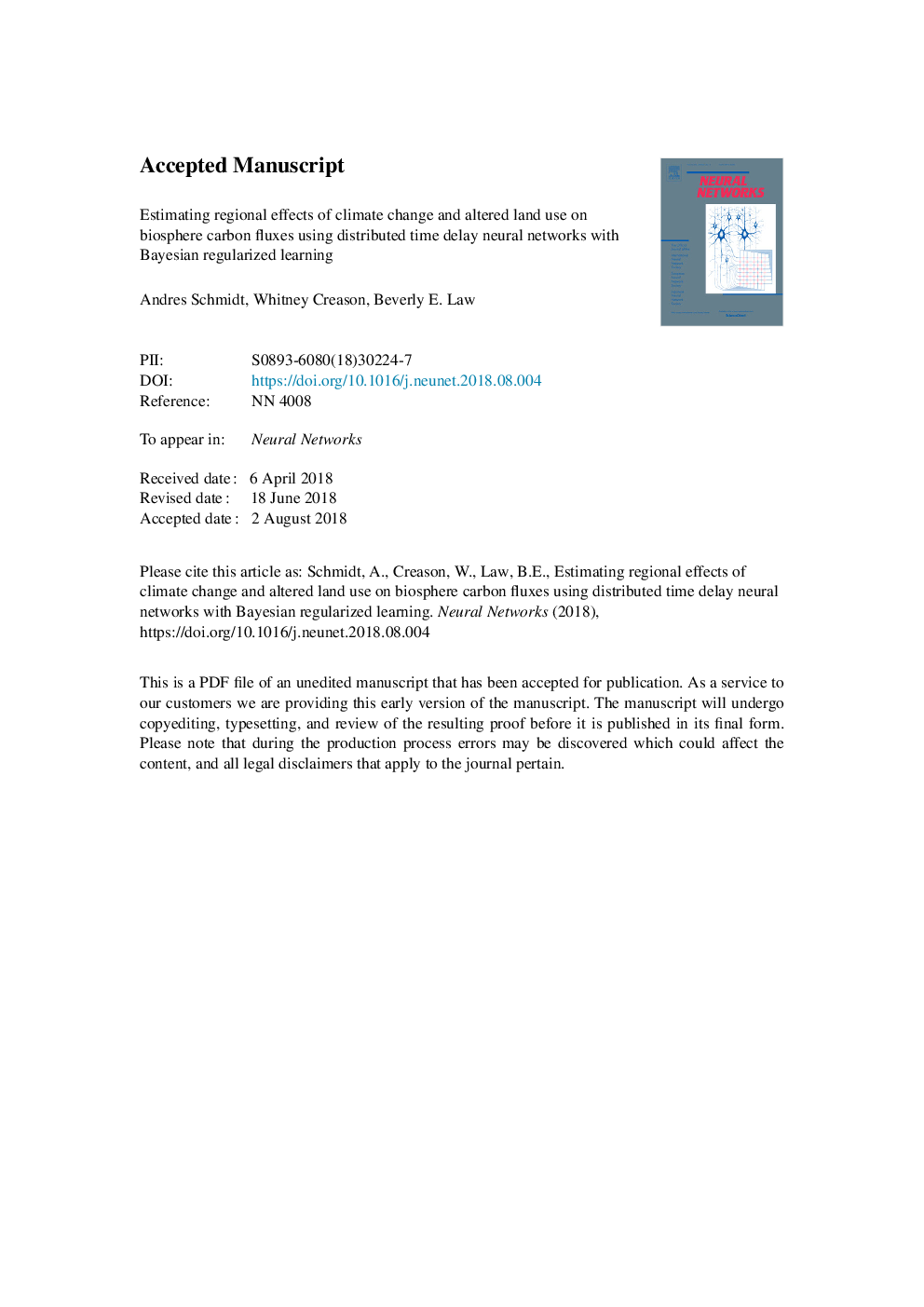| Article ID | Journal | Published Year | Pages | File Type |
|---|---|---|---|---|
| 10127110 | Neural Networks | 2018 | 48 Pages |
Abstract
The optimized models were applied in combination with downscaled climate projections of the CMIP5 project to calculate future changes in the cycle of carbon, associated with a prescribed conversion of conventional grass-crops to hybrid poplar plantations for biofuel production in Oregon. The results show that under future RCP8.5 climate conditions the total statewide NEP increases by 0.87 TgC per decade until 2050 without any land use changes. With all non-forage grass completely converted to hybrid poplar the NEP averages 32.9 TgC in 2046-2050, an increase of 9%. Through comparisons with the results of a Bayesians inversion study, the results presented demonstrate that DTDNN models are a specifically well-suited approach to use the available data from flux networks to assess changes in biosphere-atmosphere exchange triggered by massive land use conversion superimposed on a changing climate.
Keywords
Related Topics
Physical Sciences and Engineering
Computer Science
Artificial Intelligence
Authors
Andres Schmidt, Whitney Creason, Beverly E. Law,
